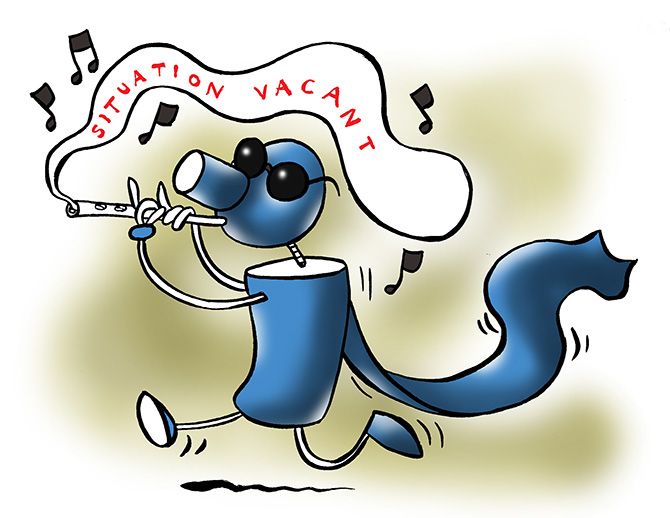Eighty per cent of the new employment requirements over the next decade would arise in the 10 states - Uttar Pradesh (UP), Madhya Pradesh, Chhattisgarh, Rajasthan, Jharkhand, Maharashtra, Odisha, West Bengal, Bihar and Assam - that account for 62 per cent of our population.
Illustration: Uttam Ghosh/Rediff.com

With a rapidly rising working age population, India would need about 100 million jobs till 2026, a recent study has revealed.
Of these, around 80 per cent or 78 million jobs would be needed to be generated in just 10 states.
PwC has released the report on Nagarik (citizen), a platform, which intends to create a synergy among states, entrepreneurs, corporate houses with market linkages and finance companies at the district level, and generate employment at the local level.
Eighty per cent of the new employment requirements over the next decade would arise in the 10 states - Uttar Pradesh (UP), Madhya Pradesh, Chhattisgarh, Rajasthan, Jharkhand, Maharashtra, Odisha, West Bengal, Bihar and Assam - that account for 62 per cent of our population.
Only ‘transformative solutions’ would help reduce the rural-urban divide, and restrict migration by shifting economic activity from larger cities to the districts, says the report.
The World Bank, in a report published earlier this year, had estimated that India would need about 8.1 million jobs annually.
UP needs the highest number of job additions, at 24.3 million by 2026 followed by Maharashtra at 9.3 million.
Take the example of UP. If its economy generates “business as usual”, it would create about 6 million jobs till 2026.
The Nagarik platform would help generate the additional 18 million jobs.
Of the 700-odd districts in India, about 230 are those which comprise the middle section - they are not among the poorest, nor among the prosperous - and could be termed as those which are “upwardly mobile”.
The programme typically selects six-seven districts in a particular state for implementation.
It looks at a five-year horizon, and intends to create 20 per cent of the total number of jobs in the first year, 50 per cent in the next two to three years, and the remaining by five years.
The share of working-age population is increasing in the country, mainly because of reduced infant mortality rates over time.
Over the next 15 years, India’s population will continue to grow younger before its starts ageing from 2034.











